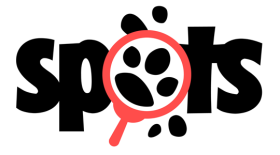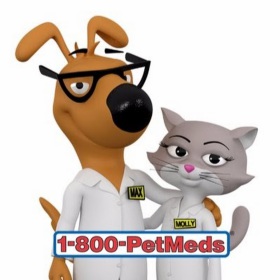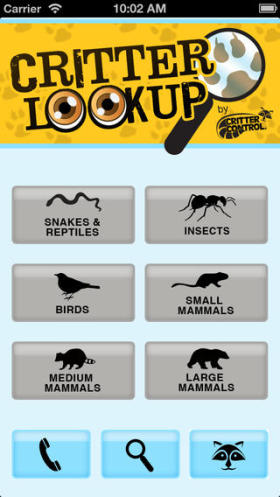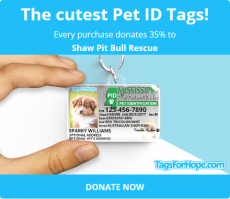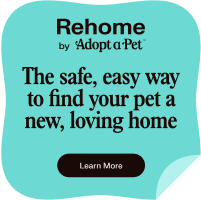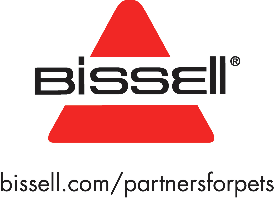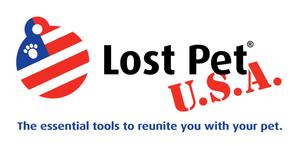CAPA MODEL
THE COMPANION ANIMAL PROTECTION ACT
Part I. Definitions
SEC. 1(a) This Act shall be known as the “_<<State>>_ Companion Animal Protection Act.”
(b) For purposes of this Act, the following definitions shall apply:
(1) A Public Sheltering Agency is a public animal control shelter or private shelter, society for the prevention of cruelty to animals, humane society, or any person or group that receives funding and/or has a contract with a city, town, or municipality under which it accepts stray or owner-relinquished animals.
(2) A Private Sheltering Agency is a shelter, society for the prevention of cruelty to animals, humane society, or animal adoption group which is designated as a non-profit under Section 501(c)(3) of the Internal Revenue Code, and: (a) which does not receive public funding or has a contract with a city, town, or municipality under which it accepts stray or owner-relinquished animals; (b) accepts animals into a physical facility other than a private residence; and, (c) places into new homes stray or owner-relinquished animals or animals who have been removed from a public or private sheltering agency.
(3) A Rescue Group is a collaboration of individuals not operated for a profit, whose primary stated purpose is animal adoption, animal rescue, or formed for the prevention of cruelty to animals.
(4) An Animal is any domestic non-human living creature of a species normally kept as a pet.
(5) An Impounded animal is any animal who enters a public or private sheltering agency or rescue group regardless of whether the animal is a stray, owner-relinquished, seized, taken into protective custody, transferred from another private or public sheltering agency, or is an animal whose owner requests that the animal be killed, except for any animal presented to a medical clinic associated with such agencies for purposes of preventative or rehabilitative medical care, or sterilization.
(6) A Stray animal is any animal who is impounded without a known owner present at impound who is voluntarily relinquishing custody.
(7) A Savable animal is any animal who is either healthy or treatable, and is not a dangerous dog.
(8) A Healthy animal is any animal who is not sick or injured.
(9) A Treatable animal is any animal who is sick or injured, whose prognosis for rehabilitation of that illness and/or injury is excellent, good, fair, or guarded as determined by a veterinarian licensed to practice in this state.
(10) A Non-rehabilitatable animal is any animal with severe illness or injury whose prognosis for rehabilitation is either poor or grave as determined by a veterinarian licensed to practice in this state.
(11) An Irremediably Suffering animal is any animal with a medical condition who has a poor or grave prognosis for being able to live without severe, unremitting pain, as determined by a veterinarian licensed to practice in this state.
(12) An Unweaned animal is any neonatal animal who, in the absence of his/her mother, requires supplemental bottle feeding by humans in order to survive. In the case of puppies and kittens, unweaned animals are animals who fit the above description and are from 0 to 4 weeks of age.
(13) A Vicious Dog is a dog who exhibits aggression to people even when the dog is not hungry, in pain, or frightened, and whose prognosis for rehabilitation of that aggression is poor or grave as determined by a trained behaviorist who is an expert on canine behavior.
(14) A Dangerous Dog is a dog adjudicated to be vicious under MN. Rev. Statutes Section 347.50 by a court of competent jurisdiction and where all appeals of that judicial determination have been unsuccessful.
Part II. Holding Periods.
SEC. 2(a) The required holding period for a stray animal impounded by any public or private sheltering agency shall be five business days, not including the day of impoundment, unless otherwise provided in this section:
(1) Stray animals without any form of identification and without a known owner shall be held for owner redemption during the first two days of the holding period, not including the day of impoundment, and shall be available for owner redemption, transfer, and adoption for the remainder of the holding period;
(2) Stray animals may be adopted into new homes or transferred to a rescue group or private sheltering agency for the purpose of adoption after the first two days of the holding period, not including the day of impoundment, except as provided in subsections (a)(3) to (6);
(3) If a stray animal is impounded with a license tag, microchip, or other form of identification, or belongs to a known owner, the animal shall be held for owner redemption during the first three days of the holding period, not including the day of impoundment, and shall be available for owner redemption, transfer, and adoption for the remainder of the holding period;
(4) Stray animals may be transferred to a private sheltering agency or rescue group immediately after impound, subject to the same rights of redemption by the owner;
(5) Irremediably suffering animals shall be euthanized without delay, upon a determination made in writing and signed by a veterinarian licensed to practice medicine in this state. That certification shall be made available for free public inspection for no less than three years;
(6) Unweaned animals impounded without their mother may be killed so long as the shelter has exhausted all efforts to place the animals in foster care, made an emergency appeal under the requirements of Section 5, and certified that it is unable to provide the needed care and feeding in its facility. That certification shall also state in clear and definitive terms why the agency is unable to place the animals in foster care, which private sheltering agencies and rescue groups it made an appeal to, what would be required in the future in order to provide the needed care and feeding in foster care or its facility, what steps are being taken to do so, and a reasonable time frame for doing so. This certification shall be made in writing, signed by the director of the agency or by a veterinarian licensed to practice medicine in the state, and be made available for free public inspection for no less than three years.
SEC. 3(a) The required holding period for an owner relinquished animal impounded by all public or private sheltering agencies shall be three days, not including the day of impoundment, with all the same duties to that of stray animals, except as follows:
(1) Any owner-relinquished animal that is impounded shall be held in the event the owner changes his or her mind, for adoption into a new home, and for transfer to a private sheltering agency or rescue group for the entirety of the holding period;
(2) Owner-relinquished animals may be adopted into new homes or transferred to a private sheltering agency or rescue group at any time after impoundment.
Part III. Animal Care Standards.
SEC. 4(a) Except as otherwise provided in this section, public and private sheltering agencies shall provide all animals during the entirety of their shelter stay with fresh food; fresh water; environmental enrichment to promote their psychological well-being such as socialization, toys and treats; and exercise as needed; however, never less than once daily, except as follows:
(1) vicious dogs, unsocial cats, or dangerous dogs are not required to be exercised during the holding period.
(b) Notwithstanding subsection (a), public and private sheltering agencies shall work with a veterinarian licensed to practice medicine in this state to develop and follow a care protocol, which is consistent with this Act, for animals with special needs such as, but not limited to, nursing mothers, unweaned animals, sick or injured animals, geriatric animals, or animals needing therapeutic exercise. This care protocol shall specify any deviation from the standard requirements of subsection (a) and the reasons for the deviation(s).
(c) During the entirety of their shelter stay, animals shall be provided prompt and necessary cleaning of their cages, kennels, or other living environments no less than two times per day, to ensure environments that are welcoming to the public, hygienic for both the public and animals, and to prevent disease. This cleaning shall be conducted in accordance with a protocol developed in coordination with a veterinarian licensed to practice medicine in this state, provided as follows:
(1) animals shall be temporarily removed from their cages, kennels, or other living environments during the process of cleaning, to prevent them from being exposed to water from hoses or sprays, cleaning solutions, detergents, solvents, and/or chemicals.
(d) During the entirety of their shelter stay, all animals shall be provided with prompt and necessary veterinary care, including but not limited to preventative vaccinations, cage rest, fluid therapy, pain management, and/or antibiotics, sufficient to alleviate any pain caused by disease or injury, to prevent a condition from worsening, and to allow them to leave the shelter in reasonable condition, even if the animals are not candidates for redemption, transfer, or adoption.
(e) Public and private sheltering agencies shall work with a veterinarian licensed to practice medicine in this state to develop and follow a protocol to prevent the spread of disease, including, but not limited to, appropriate evaluation and testing of newly impounded animals, administration of vaccines, proper isolation and handling of sick animals, and measures to protect those animals most vulnerable to infection.
Part IV. Additional Programs and Duties.
SEC. 5(a) All public and private sheltering agencies that kill animals shall maintain a registry of organizations willing to accept animals as follows:
(1) All public or private sheltering agencies, and rescue groups designated as non-profits by Section 501(c)(3) of the Internal Revenue Code, shall be immediately placed on this registry upon their request, regardless of the organizations’ geographical location or any other factor except as described under subsection (a)(5);
(2) The public or private sheltering agency may, but is not required to, include on the registry any individual rescuers or rescue groups that are not designated as non-profits under Section 501(c)(3) of the Internal Revenue Code;
(3) The registry shall include the following information as provided by the registered organization: organization name, mailing address, and telephone number; website and e-mail address, if any; emergency contact information for the organization; the types of animals about whom the organization wishes to be contacted, including species-type and breed; and whether or not the organization is willing and able to care for unweaned animals, sick or injured animals, or aggressive animals;
(4) A public or private sheltering agency may refuse to include an organization on the registry, or delete it from the registry, until such time as this is no longer the case, if any of the organization’s current directors, officers, staff, or volunteers have been convicted in a court of competent jurisdiction of a crime consisting of cruelty to animals or neglect of animals; or if such charges are pending; or if that organization is constrained by a court order that prevents the organization from taking in or keeping animals. An agency may require an organization to disclose any or all convictions, charges, and legal impediments described in this subsection;
(5) A public or private sheltering agency may require that registered organizations provide the following summary information on no more than a monthly basis: the total number of animals the organization has taken from the agency who have been adopted, died, were transferred, were killed, and are still under the organization’s care. This information may be provided in an informal format, such as via electronic mail;
(6) A public or private sheltering agency shall not demand additional information, other than that described in this section, as a prerequisite for including an organization on the registry or for continuing to maintain that organization on the registry.
(b) No public or private sheltering agency may kill an animal unless and until the agency has notified, or made a reasonable attempt to notify, all organizations on the registry described in subsection (a) that have indicated a willingness to take an animal of that type.
(1) Such notification must take place at least 24 hours prior to the killing of the animal;
(2) At a minimum, such notification shall include verifiable electronic communication. Notification is considered complete as to each individual group when this has been accomplished;
(3) No animal may be killed if an organization on the registry indicates, before the killing of the animals, its willingness to take possession of the animal;
(4) The organization agreeing to take possession of the animals must do so within two business days notifying the agency having possession of the animal;
(5) No fee may be assessed for animals released to organizations listed on the registry.
(d) The following exceptions shall apply to the requirements of subsections (b):
(1) All irremediably suffering animals shall be euthanized without delay. The determination that an animal is irremediably suffering shall be made in writing, signed by a veterinarian licensed to practice medicine in this state, and made available for free public inspection for no less than three years;
(2) Dangerous dogs pursuant to _____. Rev. Statutes Section _______;
(3) Upon the impoundment of unweaned animals without their mother, all public and private sheltering agencies which have not placed the animals into foster care or are not able to provide supplemental feeding shall immediately make an emergency appeal to organizations on the registry that have indicated that they are willing and able to care for unweaned animals, and give such organizations a reasonable amount of time, but not less than 8 hours, to respond to the appeal.
SEC. 6(a) All public and private sheltering agencies shall take appropriate action to ensure that all animals are checked for all currently acceptable methods of identification, including microchips, identification tags, and licenses. All public and private sheltering agencies shall maintain continuously updated lists of animals reported lost, and match these lost reports with animals reported found and animals in the shelter, and shall also post all stray animals on the Internet with sufficient detail and a photograph within 24 hours of being impounded to allow them to be recognized and claimed by their owners. If a possible owner is identified, the agencies shall undertake reasonable efforts to notify the owner or caretaker of the whereabouts of the animal and any procedures available for the lawful recovery of the animal.
These efforts shall include, but are not limited to, notifying the possible owner by telephone, mail, and personal service to the last known address. Upon the owner’s or caretaker’s initiation of recovery procedures, the agencies shall retain custody of the animal for not less than the holding period to allow for completion of the recovery process. Efforts to locate or contact an owner or caretaker, and communications with persons claiming to be owners or caretakers, shall be recorded and be made available for free public inspection for no less than three years.
SEC. 7(a) No public or private sheltering agency shall ban, bar, limit or otherwise obstruct the adoption or transfer of any animal based on arbitrary criteria, such as breed, age, color, or any other criteria except as to the individual animal’s medical condition and aggression, or the adopter’s fitness to adopt.
SEC. 8(a) No savable animal in a public or private sheltering agency shall be killed simply because the holding period has expired. Before an animal is killed, all of the following conditions must be met:
(1) there are no empty cages, kennels, or other living environments in the shelter;
(2) the animal cannot share a cage or kennel with another animal because the animal is aggressive to other animals, has a contagious illness the other animal does not have, or is injured and sharing the cage with another animal will aggravate the injury;
(3) a foster home is not available;
(4) organizations listed on the registry described in Section 5 are not willing to accept the animal;
(5) all mandates, programs and services of the Act have been met; and
(6) the director of the agency certifies he or she has no other alternative.
(b) The determination that all conditions of subsection (a) have been met shall be made in writing, signed by the director of the agency, and be made available for free public inspection for no less than three years.
SEC. 9(a) All animals impounded by a public or private sheltering agency or rescue group shall be killed, only when necessary and consistent with
the requirements of this Act, by lethal intravenous injection of sodium pentobarbital, except as follows:
(1) intraperitoneal injections may be used only under the direction of a licensed veterinarian, and only when intravenous injection is not possible for infant animals, companion animals other than
cats and dogs, or in comatose animals with depressed vascular function.
(2) intracardiac injections may be used only when intravenous injection is not possible for animals who are completely unconscious or comatose, for exotic animals such as rats after proper sedation, and then only under the direction of a veterinarian.
(b) No animal shall be allowed to witness any other animal being killed or being tranquilized/sedated for the purpose of being killed or see the bodies of animals which have already been killed.
(c) Animals shall be sedated/tranquilized as necessary to minimize their stress or discomfort, or in the case of vicious animals, to ensure staff safety, except as follows:
(1) neuromuscular blocking agents shall not be used.
(d) Following their injection, animals shall be lowered to the surface on which they are being held and shall not be permitted to drop or otherwise collapse without support.
(e) An animal may not be left unattended between the time procedures to kill the animal are commenced and the time death occurs, nor may the body be disposed of until death is verified.
(f) Verification of death shall be confirmed for each animal in all of the following ways:
(1) by lack of heartbeat, verified by a stethoscope;
(2) by lack of respiration, verified by observation;
(3) by pale, bluish gums and tongue, verified by observation; and
(4) by lack of eye response, verified if lid does not blink when eye is touched and pupil remains dilated when a light is shined on it.
(g) The room in which animals are killed shall be cleaned and regularly disinfected as necessary, but no less than once per day on days the room is used, except as follows:
(1) The area where the procedure is performed shall be cleaned and disinfected between each procedure.
(h) The room in which animals are killed shall have adequate ventilation that prevents the accumulation of odors.
(i) A veterinarian licensed to practice medicine in this state or a euthanasia technician certified by the state euthanasia certification program shall perform these procedures, except as follows:
(1) If a state certification program does not exist, the procedure may be performed by a trained euthanasia technician working under the direction of a veterinarian.
Part V. Public Accountability.
SEC. 10(a) A public or private sheltering agency must post, in a conspicuous place where animals are being relinquished by owners, a sign which is clearly visible and readable from any vantage point in the area which has all of the following information identified by species-type:
(1) the number of animals impounded for the prior calendar year;
(2) the number of animals impounded for the prior calendar year who were adopted;
(3) the number of animals impounded for the prior calendar year who were transferred to other agencies;
(4) the number of animals impounded for the prior calendar year who were reclaimed by their owners;
(5) the number of animals impounded for the prior calendar year who died, were lost, and/or were stolen while under the direct or constructive care of the agency; and
(6) the number of animals impounded for the prior calendar year who were killed by the agency, at the agency’s direction, with the agency’s permission, and/or by a representative of the agency.
(b) A public or private sheltering agency shall provide a monthly summary, upon request for free public inspection, that includes the following information by species-type:
(1) the number of animals impounded during the previous month;
(2) the number of animals who were killed by the agency, at the agency’s direction, with the agency’s permission, and/or by a representative of the agency during the previous month;
(3) the number of animals who died, were lost, and/or were stolen while in the direct or constructive care of such agency during the previous month;
(4) the number of animals who were returned to their owners during the previous month;
(5) the number of animals who were adopted during the previous month;
(6) the number of animals who were transferred to other organizations during the previous month; and
(c) A public or private sheltering agency shall provide an annual summary, upon request for free public inspection, which includes the following information by species-type:
(1) the number of animals impounded during the previous calendar year;
(2) the number of animals who were killed by the agency, at the agency’s direction, with the agency’s permission, and/or by a representative of the agency during the previous calendar year;
(3) the number of animals who died, were lost, and/or were stolen while in the direct or constructive care of such agency during the previous calendar year;
(4) the number of animals who were returned to their owners during the previous calendar year;
(5) the number of animals who were adopted during the previous calendar year;
(6) the number of animals who were transferred to other organizations during the previous calendar year; and
SEC. 11(a) Any public or private sheltering agency or rescue group may compel a public or private sheltering agency to follow the mandates of this Act through an action for declaratory and injunctive relief, and other appropriate remedies at law which will compel compliance.
SEC. 12(a) The provisions of this Act shall take effect immediately.
Microsoft Word document [64.0 KB]



